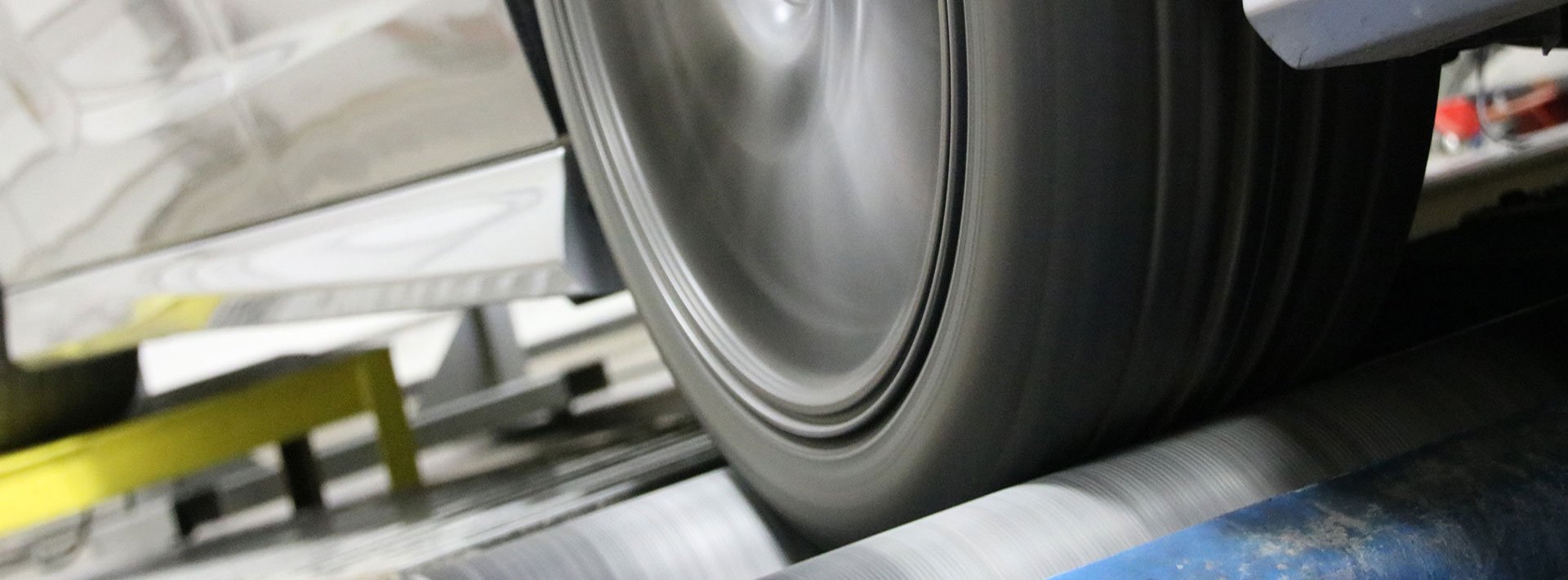ISO 4107 Passenger Car Alloy Wheel Impact Testing
The ISO 4107 standard defines a comprehensive set of requirements and procedures for testing passenger car alloy wheels under impact conditions. This test is essential to ensure the structural integrity, durability, and safety of vehicle wheels in real-world driving scenarios.
Alloy wheels are subject to various stresses during automotive use, including impacts from road debris or curbs. The ISO 4107 standard provides a standardized approach to simulate these conditions, ensuring that wheel manufacturers can produce products that meet the required safety and performance standards.
The testing process involves placing the alloy wheel on an impact machine designed specifically for this purpose. The wheel is then subjected to controlled impacts from different angles and at varying speeds, simulating potential real-world scenarios. This allows engineers to evaluate how well the wheel withstands such forces without compromising its structural integrity.
The primary objective of ISO 4107 testing is not only to assess immediate strength but also to predict long-term behavior under repeated loading conditions. By adhering strictly to this standard, manufacturers can ensure that their wheels will perform reliably over the expected lifespan of a vehicle.
The use of advanced materials and manufacturing techniques has significantly improved the quality of modern alloy wheels; however, it is crucial to validate these improvements through rigorous testing like ISO 4107. This ensures that any new design or modification does not compromise safety standards.
Test Parameters
- Impact forces ranging from 25 kN to 60 kN depending on the wheel size and type.
- Testing at various angles to simulate different real-world impacts.
- Repetitive testing cycles to evaluate fatigue resistance.
Instrumentation
The equipment used for ISO 4107 testing includes specialized impact machines capable of delivering precise and controlled forces. These machines are calibrated regularly to maintain accuracy throughout the test cycle. Additionally, sensors are employed to measure critical parameters such as acceleration, deformation, and energy absorption.
| Parameter | Description |
|---|---|
| Impact Force | The force applied during the impact, measured in kilonewtons (kN). |
| Angle of Impact | The direction from which the impact is delivered. |
| Repetition Count | The number of times the test is conducted to simulate repeated use. |
These parameters are crucial in determining whether a wheel meets the stringent requirements outlined in ISO 4107. Compliance with these standards provides assurance that consumers can rely on safe and dependable alloy wheels.
Why Choose This Test
Selecting ISO 4107 passenger car alloy wheel impact testing is critical for ensuring the highest level of safety and reliability in automotive manufacturing. By adhering to this international standard, manufacturers can guarantee that their products meet global quality benchmarks.
This test offers several advantages over other methods available today. For instance, it provides a standardized approach that eliminates variability between different labs or facilities, leading to consistent results across multiple locations. This consistency is particularly important when dealing with complex materials and processes involved in modern wheel production.
The rigorous nature of ISO 4107 ensures that only wheels capable of enduring harsh conditions are approved for use on vehicles. This reduces the risk of accidents caused by defective components, thereby enhancing overall road safety.
Moreover, compliance with this standard helps companies stay ahead in competitive markets where customer trust and satisfaction are paramount. It demonstrates a commitment to quality that can enhance brand reputation and drive consumer confidence.
Environmental and Sustainability Contributions
The ISO 4107 standard plays an important role in promoting sustainable practices within the automotive industry by encouraging the use of eco-friendly materials and processes. Through rigorous testing, manufacturers are incentivized to innovate continuously towards more environmentally friendly solutions.
By ensuring that wheels can withstand severe impacts without failure, this test supports extended vehicle lifespans, reducing waste associated with premature replacements due to structural issues. This aligns well with broader efforts aimed at minimizing resource consumption and promoting circular economy principles within the manufacturing sector.
The emphasis on durability also contributes positively towards reducing emissions from transportation, as fewer repairs or replacements mean less fuel consumed throughout a vehicle's lifetime. Furthermore, compliant wheels contribute to smoother rides and better handling characteristics, which can indirectly lead to lower energy consumption during driving.
Use Cases and Application Examples
| Application Scenario | Description |
|---|---|
| Highway Accidents | Testing wheels after a simulated accident to ensure they remain safe and functional. |
| Road Debris Impact | Evaluating wheel resistance against impacts from small rocks or metal fragments. |
These scenarios highlight the importance of ISO 4107 testing in ensuring passenger safety during potentially dangerous situations. The test results provide valuable insights into how wheels perform under extreme conditions, enabling manufacturers to improve product design and enhance overall reliability.
- Test Setup: A wheel is mounted on an impact machine set up according to the specified parameters.
- Data Collection: Sensors record key performance indicators during each test cycle.
- Evaluation: Engineers analyze collected data to determine compliance with ISO 4107 standards.





